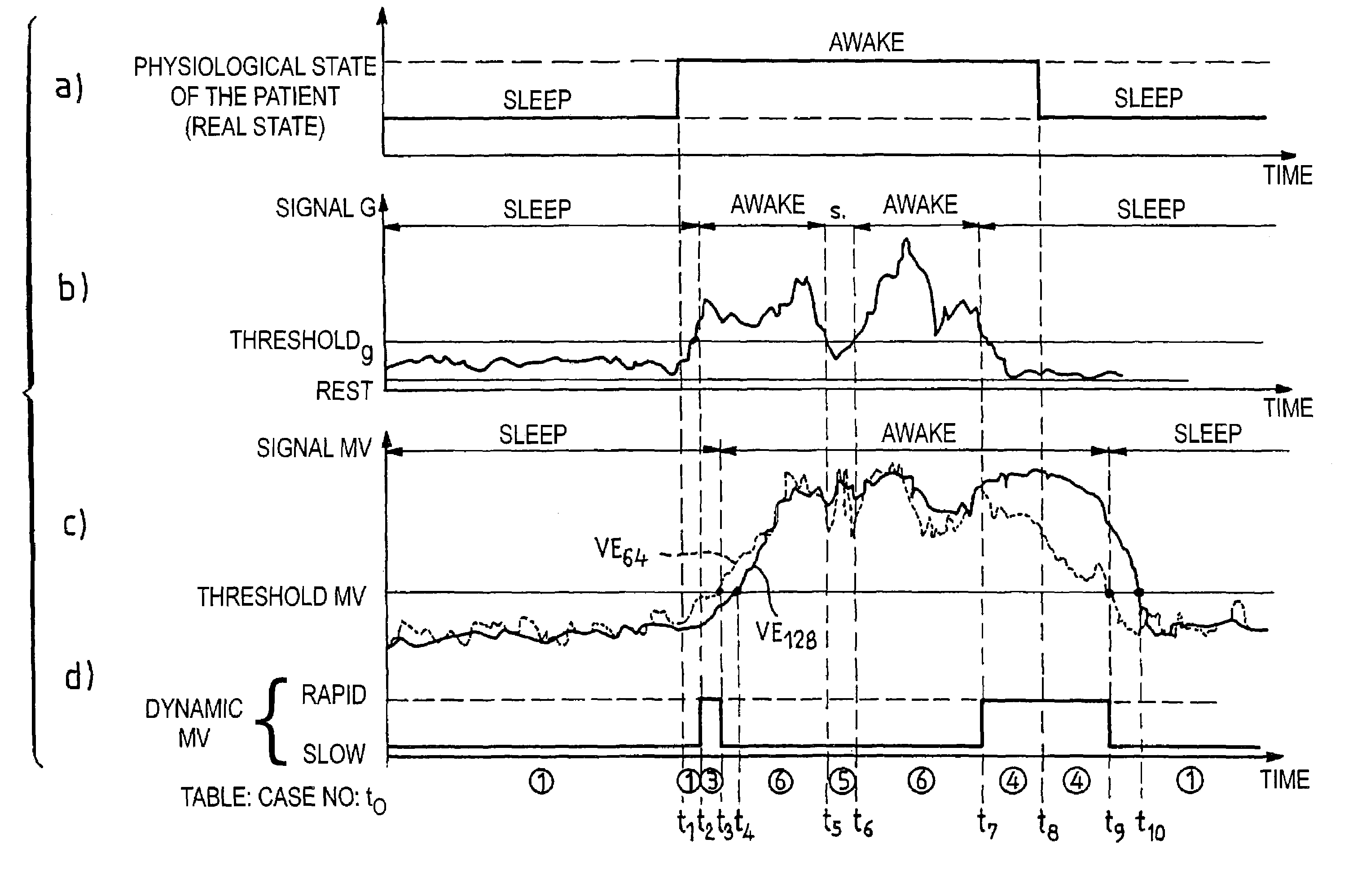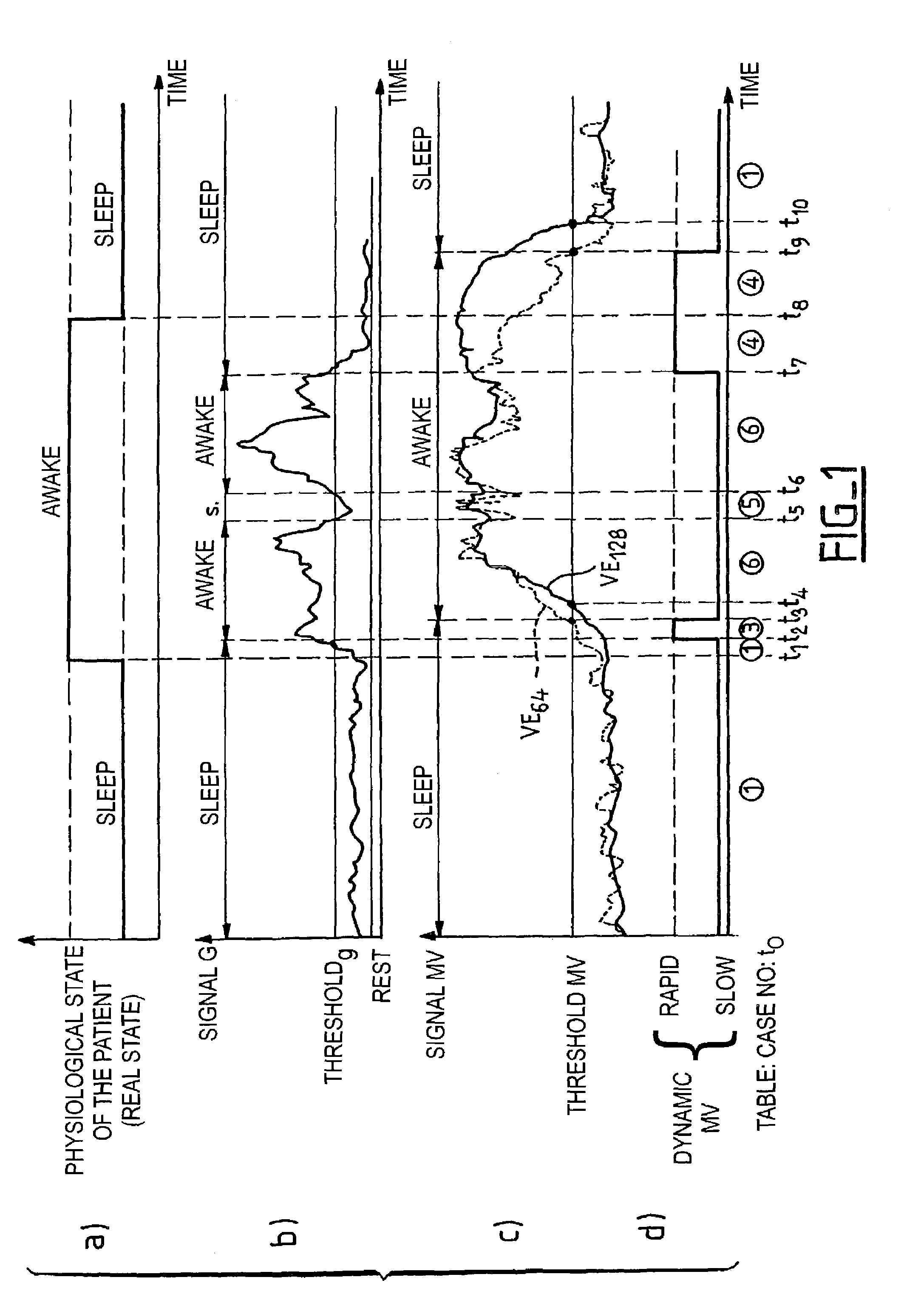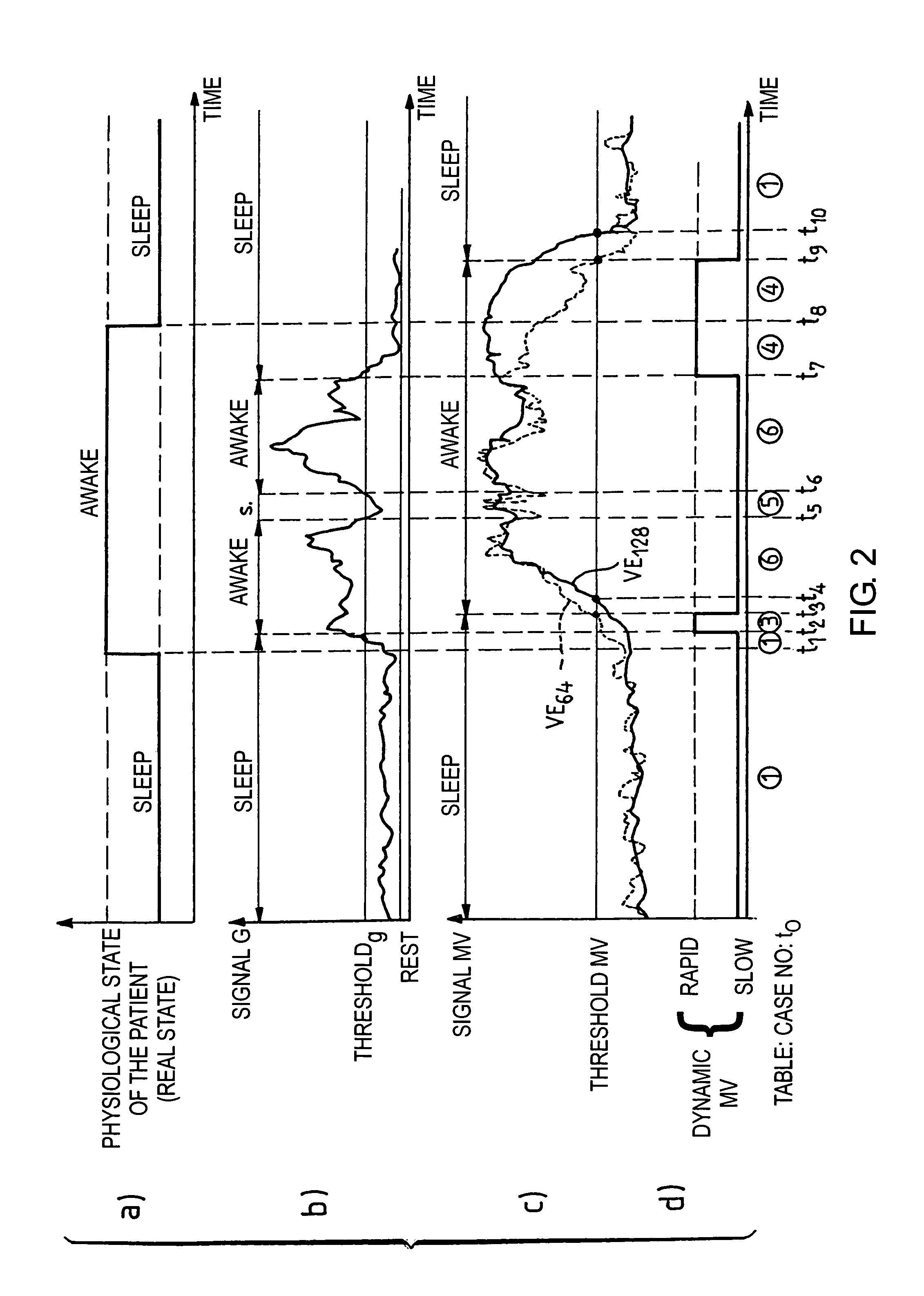Detection and the treatment of ventilatory disorders during sleep for an active implantable medical device, in particular a pacemaker
- Summary
- Abstract
- Description
- Claims
- Application Information
AI Technical Summary
Benefits of technology
Problems solved by technology
Method used
Image
Examples
Embodiment Construction
[0021]As indicated above, the respiratory pause is not the only sleep disorder that induces a blood oxygen desaturation. The significant reduction (without a respiratory pause) of the respiratory volume, or hypopnea, is another cause of desaturation. The invention thus proposes to detect the occurrence of such hypopneas by an analysis of the variation of the ventilatory activity, specifically the minute-ventilation signal.
[0022]The minute-ventilation signal, in a well-known manner, is measured starting from the parameters of amplitude and periodicity of the successive respiratory cycles. The cycle to cycle analysis is carried out according to a standard known technique, for example, as described in EP-A-0 493 222 and U.S. Pat. No. 5,303,702 mentioned above, to which one will be able to refer for further details regarding a representative technique by which the signal representative of the respiratory activity is collected and analyzed, in particular to obtain the information from mi...
PUM
 Login to View More
Login to View More Abstract
Description
Claims
Application Information
 Login to View More
Login to View More - R&D
- Intellectual Property
- Life Sciences
- Materials
- Tech Scout
- Unparalleled Data Quality
- Higher Quality Content
- 60% Fewer Hallucinations
Browse by: Latest US Patents, China's latest patents, Technical Efficacy Thesaurus, Application Domain, Technology Topic, Popular Technical Reports.
© 2025 PatSnap. All rights reserved.Legal|Privacy policy|Modern Slavery Act Transparency Statement|Sitemap|About US| Contact US: help@patsnap.com



